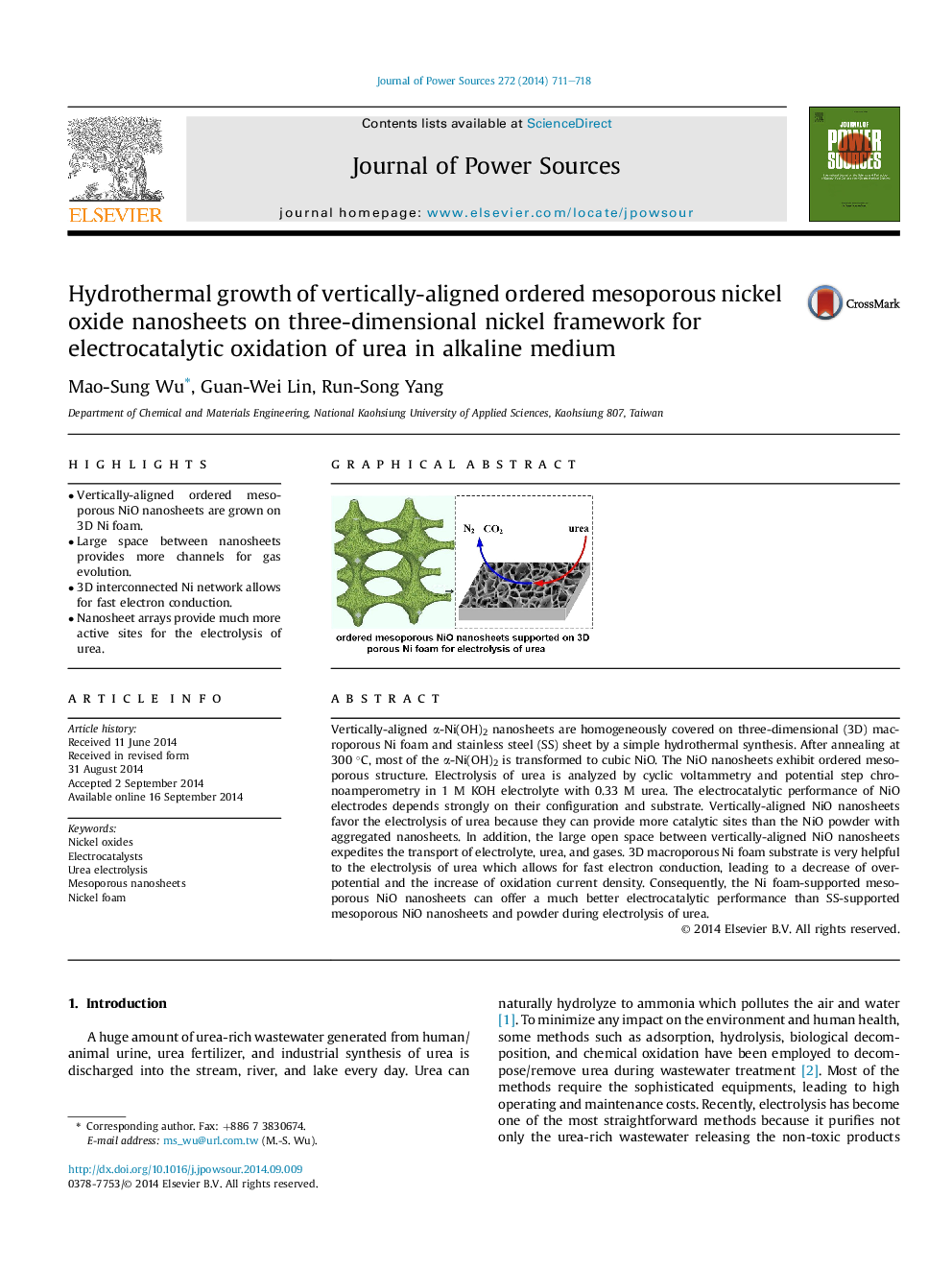| Article ID | Journal | Published Year | Pages | File Type |
|---|---|---|---|---|
| 1283976 | Journal of Power Sources | 2014 | 8 Pages |
•Vertically-aligned ordered mesoporous NiO nanosheets are grown on 3D Ni foam.•Large space between nanosheets provides more channels for gas evolution.•3D interconnected Ni network allows for fast electron conduction.•Nanosheet arrays provide much more active sites for the electrolysis of urea.
Vertically-aligned α-Ni(OH)2 nanosheets are homogeneously covered on three-dimensional (3D) macroporous Ni foam and stainless steel (SS) sheet by a simple hydrothermal synthesis. After annealing at 300 °C, most of the α-Ni(OH)2 is transformed to cubic NiO. The NiO nanosheets exhibit ordered mesoporous structure. Electrolysis of urea is analyzed by cyclic voltammetry and potential step chronoamperometry in 1 M KOH electrolyte with 0.33 M urea. The electrocatalytic performance of NiO electrodes depends strongly on their configuration and substrate. Vertically-aligned NiO nanosheets favor the electrolysis of urea because they can provide more catalytic sites than the NiO powder with aggregated nanosheets. In addition, the large open space between vertically-aligned NiO nanosheets expedites the transport of electrolyte, urea, and gases. 3D macroporous Ni foam substrate is very helpful to the electrolysis of urea which allows for fast electron conduction, leading to a decrease of overpotential and the increase of oxidation current density. Consequently, the Ni foam-supported mesoporous NiO nanosheets can offer a much better electrocatalytic performance than SS-supported mesoporous NiO nanosheets and powder during electrolysis of urea.
Graphical abstractFigure optionsDownload full-size imageDownload as PowerPoint slide
